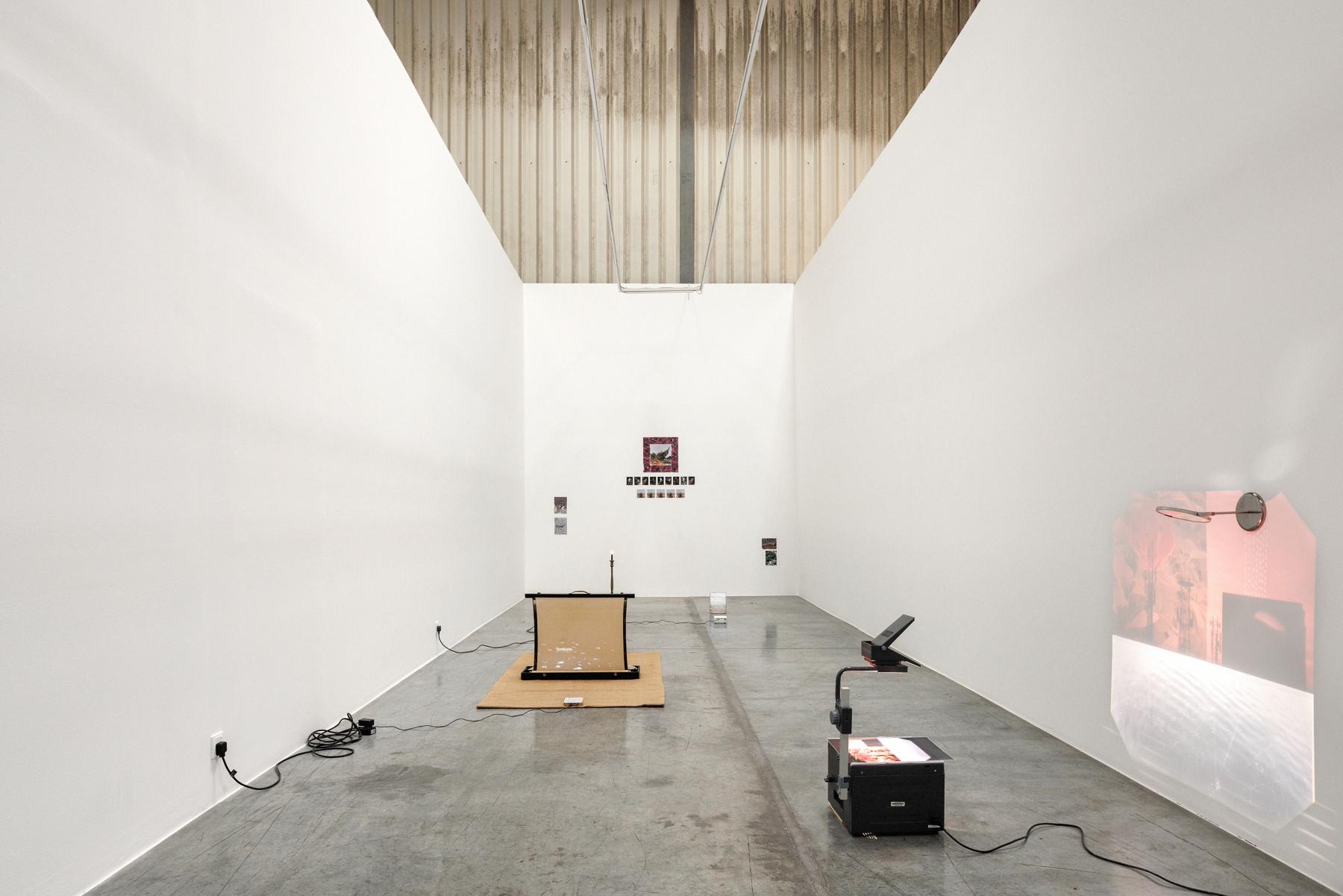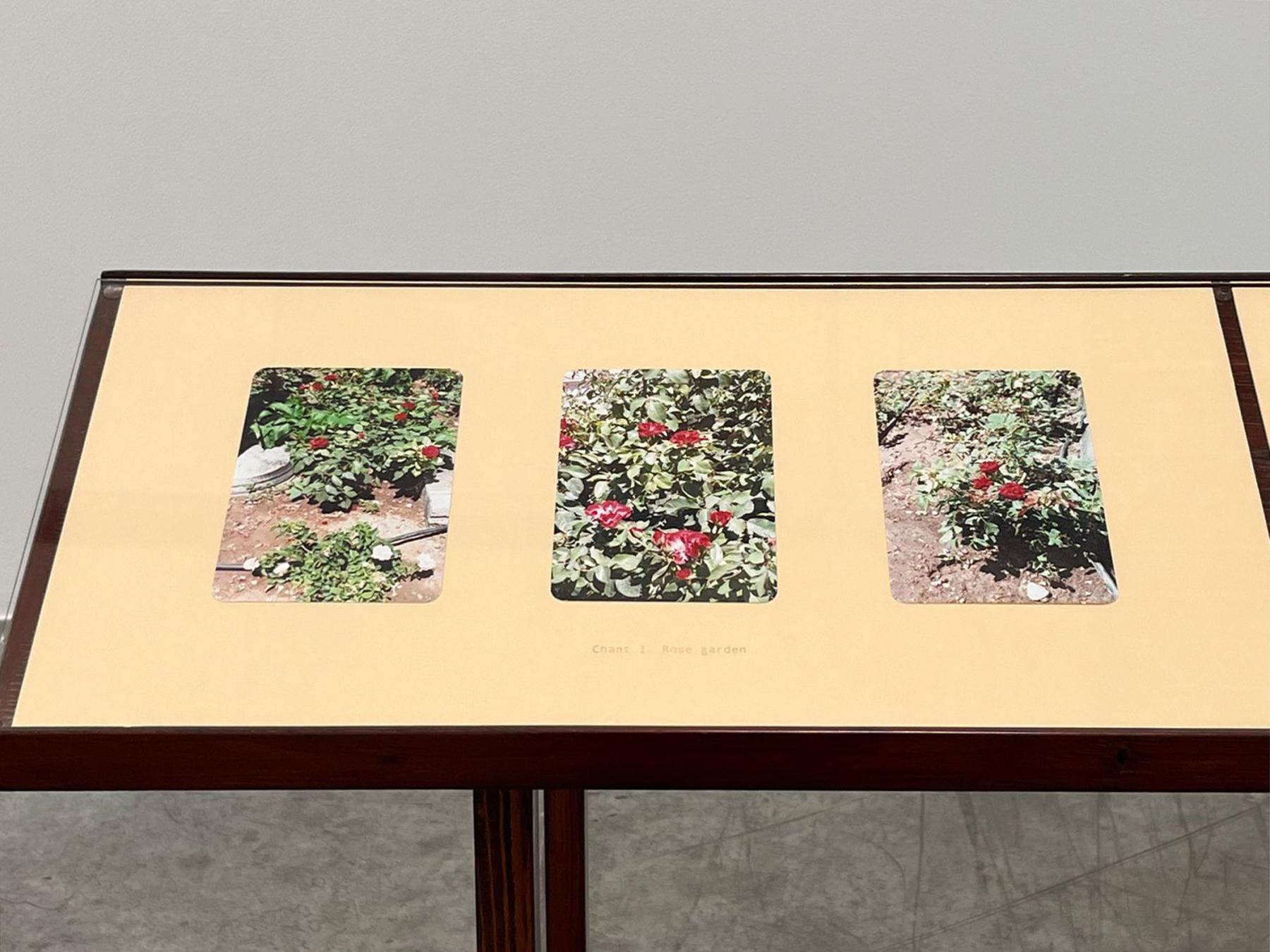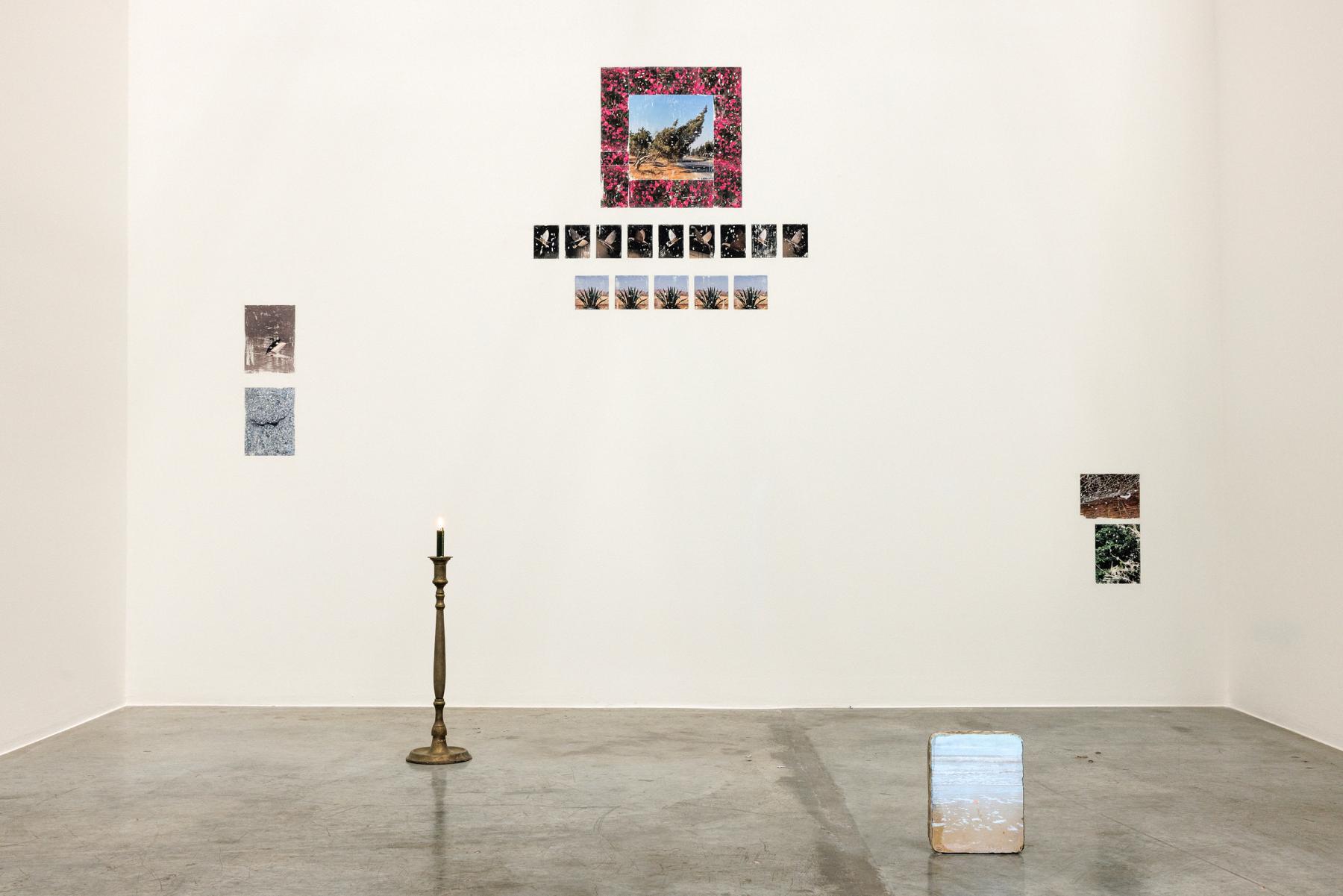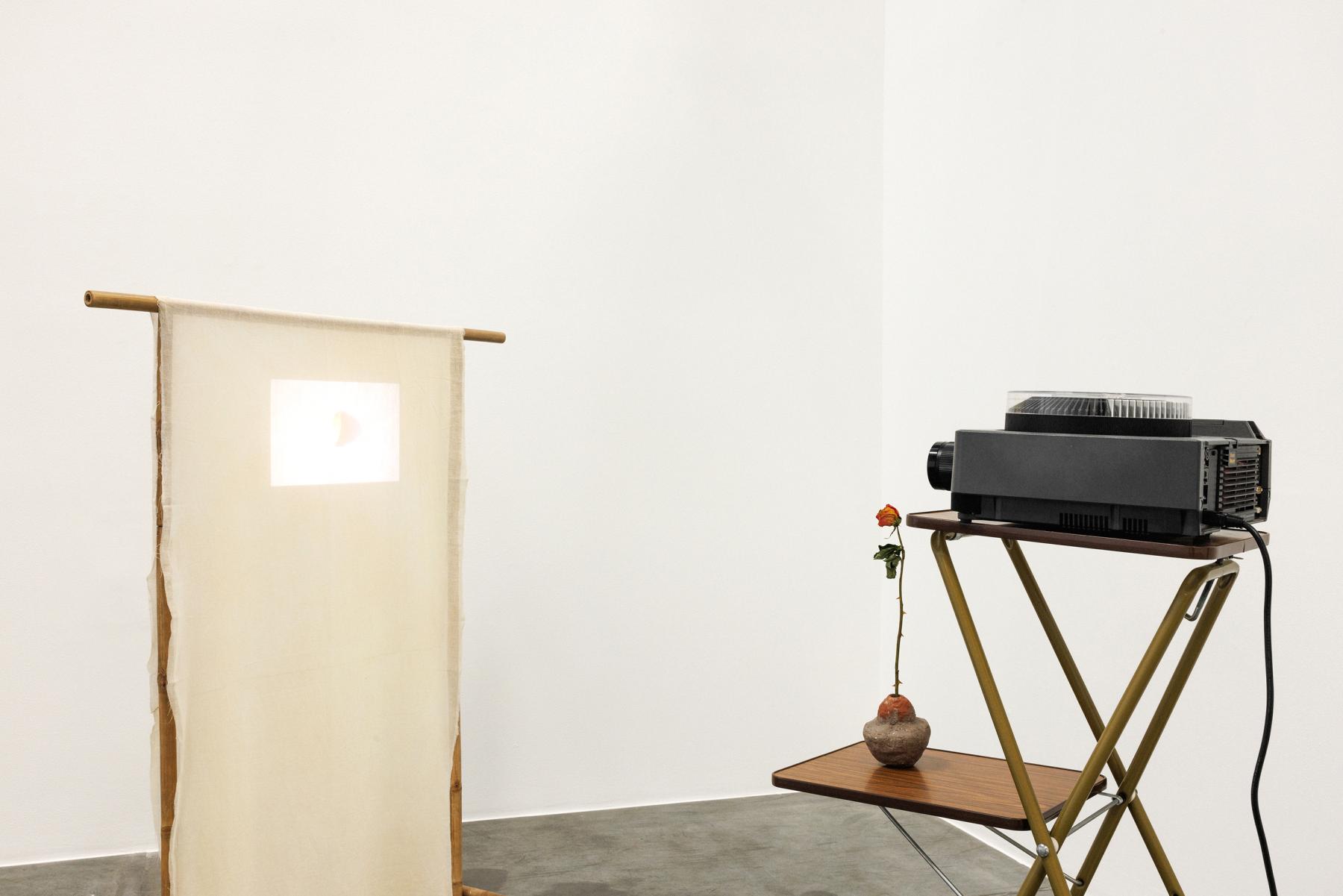The Shedding of Memory: Lament of a Tree by Iqra Tanveer
The tree that stood the test of time—a witness, a bystander—with its layered archive of memories, quietly laments the shedding of its leaves. Through chants, invocations and incantations, feelings of grief, melancholy, loss and solitude flicker across a series of analogue photographs, soft translucent projections and various surfaces as they collectively endure the resounding emotion of remembrance.
Iqra Tanveer is a Pakistani artist and photographer based in Amsterdam, where she settled following a residency programme at the Rijksakademie. Her education in Pakistan—a post-colony—emphasised Western philosophies, often overshadowing the narratives coming from within their own region. Despite living and working within a Western context, Tanveer persistently gravitates towards Eastern philosophies around time and collective consciousness, in opposition to the largely Euro-centric approach of perceiving the world through the individual.

Installation view of Lament of a Tree at Grey Noise (Dubai, 2024).
Reflecting upon this contradiction through her photographs, video works and installations, Tanveer investigates the meaning of reality as opposed to illusion, centred on Eastern philosophical thought, metaphysics, quantum physics and Sufi practices. Her meditative works are marked by the various phases of her own life. Following the loss of her mother and the angst of seeking the unseen, Tanveer began to consider memory as a place of refuge. By making this her starting point, she delves deeper into understanding materiality through her works which conversely become a commemoration of these memories.
This is well articulated in the series titled Chants (2024), comprising thirty-six analogue photographs captured on a single film roll and distributed across twelve groups of images. Each group features three distinct photographs of a single element, such as the word "fountain", forming one chant. Through repetition (Fountain, Fountain, Fountain), the series is meant to evoke its memory and associated attributes. Rose Garden, for instance, recalls Tanveer’s visit to the shrine of the thirteenth-century Sufi poet Rumi. With three images of delicate rose bushes displayed next to each other, the work also reflects on the teacher-disciple relationship between Shams Tabrizi and Rumi—as the artist explained in a conversation with the author—characterised by their metaphysical nature of being. The analogue photographs maintain an aesthetic inspired by her parents’ wedding album from the 1980s, with the prints rendered in rounded edges and yellowed surfaces. These are complemented by engraved titles—akin to the titles and dates often found as labels in family photo albums—instilling a sense of perpetuity.

Chants (2024) - Chant 1: Rose Garden (Photo on silver gelatin paper [10 x 15 centimetres / 15 x 10 centimetres each], mount board with text engraving [28.5 x 55 centimetres], edition 1/3 [each chant])
Tanveer’s summoning of the memories extends to a variety of materials, including fabric, lithography stones, and even salt, in the form of residue from a sea that has perhaps now ceased to exist. She also utilises image transfers and projections onto walls, where the image becomes like skin as it reconstructs a memory within the space. This is evidenced in her work Voices from the cave (2024), where an image is projected onto a lithograph stone placed amidst a set of print transfers on the wall. A candle stand is placed in front of the stone and projections—in an altar or shrine-like capacity. Given its characteristics and use as a literal image-making material, the litho stone in this context serves as a memory stone, retaining layers of previous imprints, each sealed atop the other. As it is no longer used for printing, the image becomes a memory for/of the stone, and the stone transforms into a relic in a shrine, or a tombstone in a cemetery.

Voices from the cave (2024. Lithography stone, projector, image projection, candle stand, candle, laserjet print transfer on wall, dimensions variable.)
Much of Tanveer’s visual language relies on natural processes. The images organically create their own place through their interaction with surfaces independent of her control, wherein the surfaces further determine the extent to which the images are retained, revealed or erased. In a personal work titled Lament of a Tree (2024), which also lends its name to the exhibition, Tanveer presents an elaborate installation, comprising a slide projector and a ceramic pot holding a dried rose—both placed on a foldable table—facing a bamboo stand draped with a dyed muslin fabric. The central motif here are the fallen leaves, foraged by Tanveer during one of her walks. These leaves were first photographed on the fabric. The fabric was then dyed with these very leaves, imbuing them with another layer of materiality, as the leaves became part of the very fabric they were laid on before withering away. The images of the leaves are subsequently projected onto the very fabric that is now stained by them, leaving us with images composed of a subtle light—quietly transpiring like a beautiful memory, an imprint on its own past self.

Lament of a Tree (2024. slide projector, ceramic pot, dried rose, foldable table, bamboo clothing stand, naturally dyed muslin fabric by fallen leaves which are projected, dimensions variable.)
Lamentations and mourning over a period of time essentially become invocations; the physical and aural act of chanting consistently in remembrance recalls memories of love, loss and grief. These feelings and emotions resonate globally and politically in the current climate. One notices a lingering sense of a possible future that permeates these works, embodying a past and present that Tanveer refrains from presenting directly. She indicates this to be the urgency of living in the present, which in turn manifests a sense of urgency towards an unknown future. Memory is not solely derived from reflecting on the past but also encompasses our collective anticipation for what more is to be lost in the future.

Installation view of Lament of a Tree at Grey Noise (Dubai, 2024).
To learn more about artists engaging with analogue photographic practices, read Saloni Jaiwal’s review of the group exhibition Dreams of a Summer Past (2024), Radhika Sharma’s conversation with Vijay Sarathy and Shankar Tripathi’s reflections on Zahra Yazdani’s solo show Scripted Selves: Sutures of Signs and Symbols (2024). Also revisit Najrin Islam’s two-part conversation with Srinivas Kuruganti on his work with The Analogue Approach Project (TAAP) and his own extensive personal archive.
All images from Lament of a Tree (2024) by Iqra Tanveer, courtesy of the artist.




